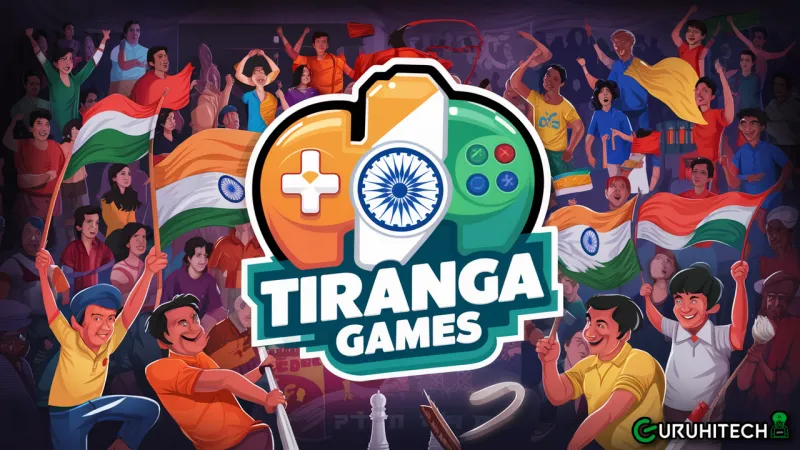Introduction to Tiranga Game
Tiranga is a captivating game that celebrates the essence of teamwork, strategy, and cultural heritage. Named after India’s iconic flag, "Tiranga," which symbolizes the nation’s pride, unity, Tiranga Game and diversity, the game draws inspiration from Indian traditions while providing an engaging experience. It combines elements of strategic gameplay with a sense of patriotism, making it appealing to a broad range of players. Whether you are a strategic thinker, a history enthusiast, or someone looking for a fun activity to share with friends, Tiranga offers a unique way to explore culture through the lens of gaming.

Game Concept and Objective
The core concept of Tiranga revolves around players using tactical thinking and decision-making skills to achieve a common goal. While the game might vary slightly based on the version or platform, the essential premise remains the same: players must collaborate and compete to accomplish specific objectives tied to the flag’s symbolism, such as unity, peace, and strength.
In most variations of Tiranga, players are required to complete tasks or challenges, which are designed around themes such as cooperation, strategic planning, and awareness of Indian culture and history. The game is often designed in such a way that the players must come together, use their strengths, and act as one to overcome obstacles,Tiranga Game mirroring the spirit of the Indian flag—unity in diversity.
Gameplay Mechanics
Tiranga blends strategy, skill, and knowledge into one seamless gaming experience. The gameplay involves moving across a board or virtual arena, with players having to make smart decisions that could help them complete missions, outmaneuver opponents, or support one another in cooperative play. The key to success lies in managing resources, planning your moves, and working in harmony with teammates.
The game’s mechanics are designed to keep players on their toes, offering a mix of planned and spontaneous challenges. At the heart of the gameplay is the balance between individual success and teamwork. Players must consider not only their own actions but also how their moves affect the larger group or the game’s overall progress. There are opportunities for strategic alliances, but players must also be mindful of the potential for competition.
Cultural Themes and Symbolism
One of the most unique aspects of Tiranga is its connection to Indian culture and history. The game draws inspiration from the values symbolized by the Indian national flag—the tricolor of saffron, white, and green—each representing different aspects of the nation: courage, peace, and prosperity, respectively. These colors are woven into the game’s design, with each stage or challenge reflecting one of these values.
As players progress through the game, they encounter challenges and objectives that are rooted in themes of unity, patriotism, and history. Whether it's solving puzzles related to Indian independence or navigating obstacles that represent national milestones, the game offers a rich educational experience that teaches players about India’s diverse culture while keeping them entertained.
Multiplayer Experience and Social Interaction
Tiranga shines in its multiplayer modes, which allow players to team up and work toward common goals. This cooperative aspect of the game encourages communication, collaboration, and mutual support. In many multiplayer scenarios, the team’s success depends on how well the members can coordinate their actions, with each player contributing to the completion of different tasks or challenges.
This social interaction aspect not only adds an exciting layer of competition but also helps to foster relationships between players. The need for teamwork and strategic cooperation builds trust and enhances social skills, making the game both fun and educational.
Skills and Benefits from Playing Tiranga
Tiranga is not just about fun; it also offers several developmental benefits. The game promotes strategic thinking, problem-solving, and decision-making, all while reinforcing the importance of collaboration. It also helps improve critical thinking and cognitive skills, as players must constantly adapt to changing game conditions and think several steps ahead.
Moreover, Tiranga provides a sense of cultural awareness and pride, especially for players interested in exploring India’s rich heritage. The game’s ability to intertwine culture with gameplay allows players to learn more about the country’s traditions and values in an interactive and engaging way.
Conclusion
Tiranga is a game that offers much more than just entertainment; it’s an immersive journey into the heart of India’s culture and history. By combining strategy, teamwork, and cultural education, Tiranga provides a unique and meaningful experience. Whether you’re looking to enjoy a casual game with friends or delve into Indian heritage while challenging your strategic skills, Tiranga is an ideal choice. It’s a game that unites players through both its competitive and cooperative aspects while celebrating the spirit of unity, diversity, and patriotism.